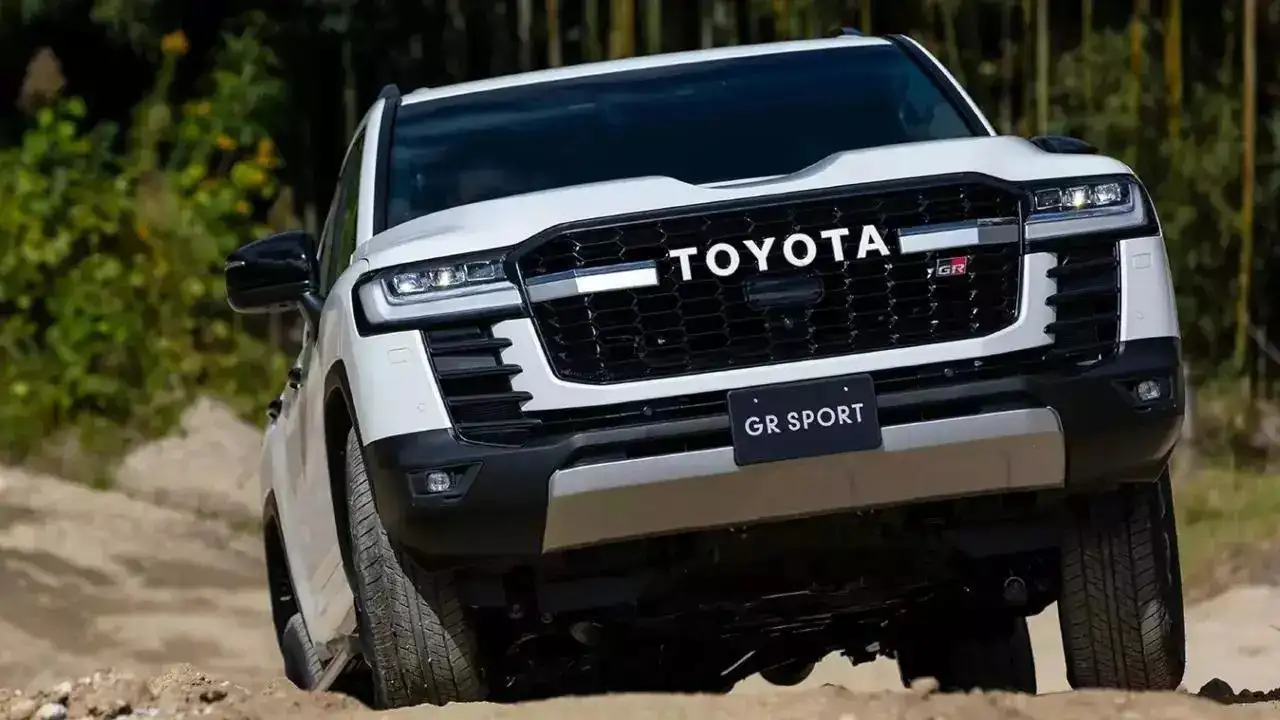When it comes to off-road SUVs, not all are created equal. Some are engineered to conquer deserts, crawl over rocks, and trudge through mud without missing a beat. Others, despite rugged marketing and aggressive styling, fall apart when exposed to the real rigors of trail life. In the world of four-wheel drives, durability is everything.
A true off-roader isn’t just about big tires and ground clearance—it’s about drivetrain strength, chassis integrity, and mechanical simplicity that can endure thousands of miles in the harshest environments imaginable.
Across decades, automakers have designed some genuinely indestructible 4x4s—vehicles that seem to get stronger with age. These rigs have been battle-tested in everything from Dakar rallies to Arctic expeditions.
They’ve been pushed to the limit by farmers, soldiers, overlanders, and weekend warriors. Their dependability isn’t measured by fancy interior features or fuel economy; it’s measured by how many trails they can survive, how often they come back under their own power, and how easily they can be fixed with a basic toolkit and some elbow grease.
Conversely, there are SUVs that wear the off-road badge but can’t live up to the hype. Some suffer from weak suspension components that break under load, others from fragile electronics that fail in dusty, wet, or bumpy conditions.
These “soft-roaders” often appeal to the suburban crowd looking for a rugged image without requiring real off-road ability. But when pushed off the pavement, they crack—sometimes literally.
In this article, we’re diving deep into both ends of the off-road SUV spectrum. We’ll cover five tough-as-nails off-road SUVs that are known for taking a brutal beating and coming back for more. Then we’ll look at five pretenders—SUVs that might look the part but have been proven to fail when the going gets rough.
Whether you’re shopping for your next adventure vehicle or just love talking trail-ready machines, this list will give you a clear picture of what survives—and what breaks—when the dirt gets deep and the rocks get sharp.
Also Read: 10 Best Daily Drivers for Harsh City Traffic With Best Fuel Efficiency
5 Off-Road SUVs That Take a Beating
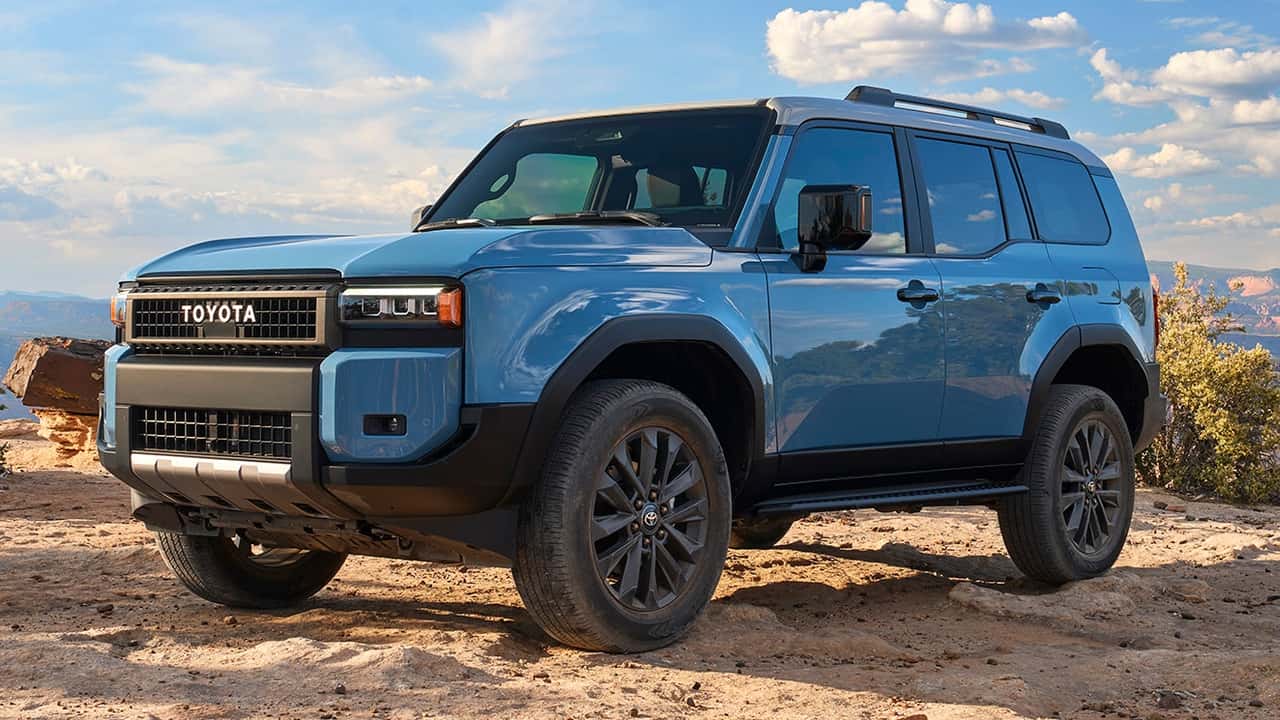
1. Toyota Land Cruiser (J80/J100/J200 Series)
The Toyota Land Cruiser is the undisputed king of durable off-road SUVs. Whether it’s the J80, J100, or J200 series, these vehicles are overbuilt to a level rarely seen in modern automotive engineering.
Take the J80 for instance: solid axles front and rear, full-time four-wheel drive, locking differentials, and a chassis that can handle everything from sand dunes in the Sahara to Arctic tundra.
The J100 introduced independent front suspension in some models but retained the same bulletproof character, while the J200 modernized the lineup with more luxury but without sacrificing its core toughness. These trucks are trusted by the UN, militaries, and NGOs because they start in any condition, run on questionable fuel, and keep going when others have failed.
What really makes the Land Cruiser shine in the durability department is Toyota’s engineering culture. Every nut and bolt on these vehicles is designed with long-term abuse in mind. The engines—particularly the inline-six 1FZ-FE and the V8 2UZ-FE—are known for lasting 500,000 miles or more with regular oil changes.
Electronics are kept relatively simple, and the layout under the hood makes maintenance accessible. Combine that with heavy-duty components like massive axles, beefy transfer cases, and resilient transmissions, and you’ve got a vehicle that almost dares you to try to break it.
While newer models have moved more toward luxury, the underlying mechanical resilience remains. The J200 series, though heavier and more tech-laden, still holds its own on rugged terrain.
Owners across the world regularly take these SUVs into the wildest corners of the planet, with confidence that they’ll return. In the world of off-road SUVs, nothing has a reputation quite like the Land Cruiser—for good reason.

2. Jeep Wrangler (TJ/JK/JL)
The Jeep Wrangler is one of the most iconic off-road vehicles ever made, and it earns its reputation by surviving just about anything you can throw at it.
While earlier CJ models were certainly trail-ready, the TJ, JK, and JL generations brought better suspension geometry and more drivetrain options without losing the essence of a rugged, purpose-built off-roader.
The TJ introduced coil springs, vastly improving ride and articulation. The JK gave owners more room, more power, and better aftermarket support. And the JL refined the package with modern tech, upgraded axles, and improved fuel economy while maintaining trail dominance.
The Wrangler’s design is uniquely suited to abuse. Its body-on-frame construction, solid axles, short overhangs, and removable doors and roof make it a Swiss Army knife for outdoor exploration.
Whether you’re climbing over boulders in Moab or forging through muddy trails in the Appalachians, the Wrangler is engineered to take the hits.
The 4.0L inline-six in older models is particularly bulletproof, while newer Pentastar V6 and turbocharged four-cylinder options offer strong performance with decent durability, especially when maintained properly.
What truly sets the Wrangler apart is its massive aftermarket support. You can rebuild or upgrade almost any component, from the suspension and axles to lockers and armor.
If something breaks, it’s usually a matter of swapping in upgraded parts, not a death sentence for the vehicle. Even when used hard, Wranglers maintain strong resale value—a testament to their long-standing reliability in the off-road world.
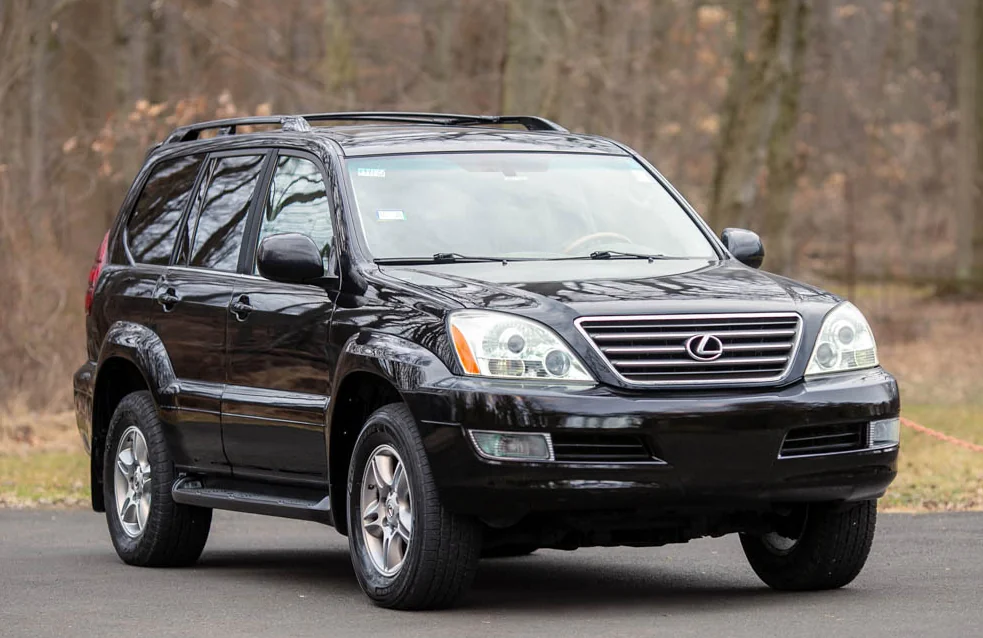
3. Lexus GX 470 / GX 460
Though often overlooked because of its luxury badge, the Lexus GX is essentially a Land Cruiser Prado underneath—and that means it’s tough. The GX 470, built from 2003 to 2009, came with a full-time 4WD system, a locking center differential, body-on-frame construction, and the incredibly reliable 4.7L 2UZ-FE V8.
This engine is known to run nearly forever and is paired with a transmission that handles both street driving and trail duty with ease. The GX 460 that followed continues this trend, adding more refinement and electronic features without compromising trail capability.
With KDSS (Kinetic Dynamic Suspension System) and Crawl Control available, the GX can go toe-to-toe with serious off-road rigs when properly equipped.
What surprises most people is how much abuse the GX can take. It’s not uncommon to see GX 470s with over 300,000 miles still running their original powertrains. Owners who swap out the factory running boards for sliders and lift the suspension quickly realize the GX transforms into a true off-road weapon.
The suspension components are shared with other Toyota 4x4s, making replacement parts plentiful and reliable. While it might wear a Lexus badge and come with leather seats, the bones of the GX are as tough as any purpose-built off-roader on the market.
Another key strength is the simplicity of its systems compared to modern luxury SUVs. The traction control, throttle mapping, and 4WD systems work reliably in off-road scenarios, and with fewer unnecessary gadgets than some of its German competitors, there’s less to break when you’re miles from the nearest road.
The GX is proof that luxury and durability don’t have to be opposites—underneath its refined skin lies one of the most capable, long-lasting SUVs on the trail.
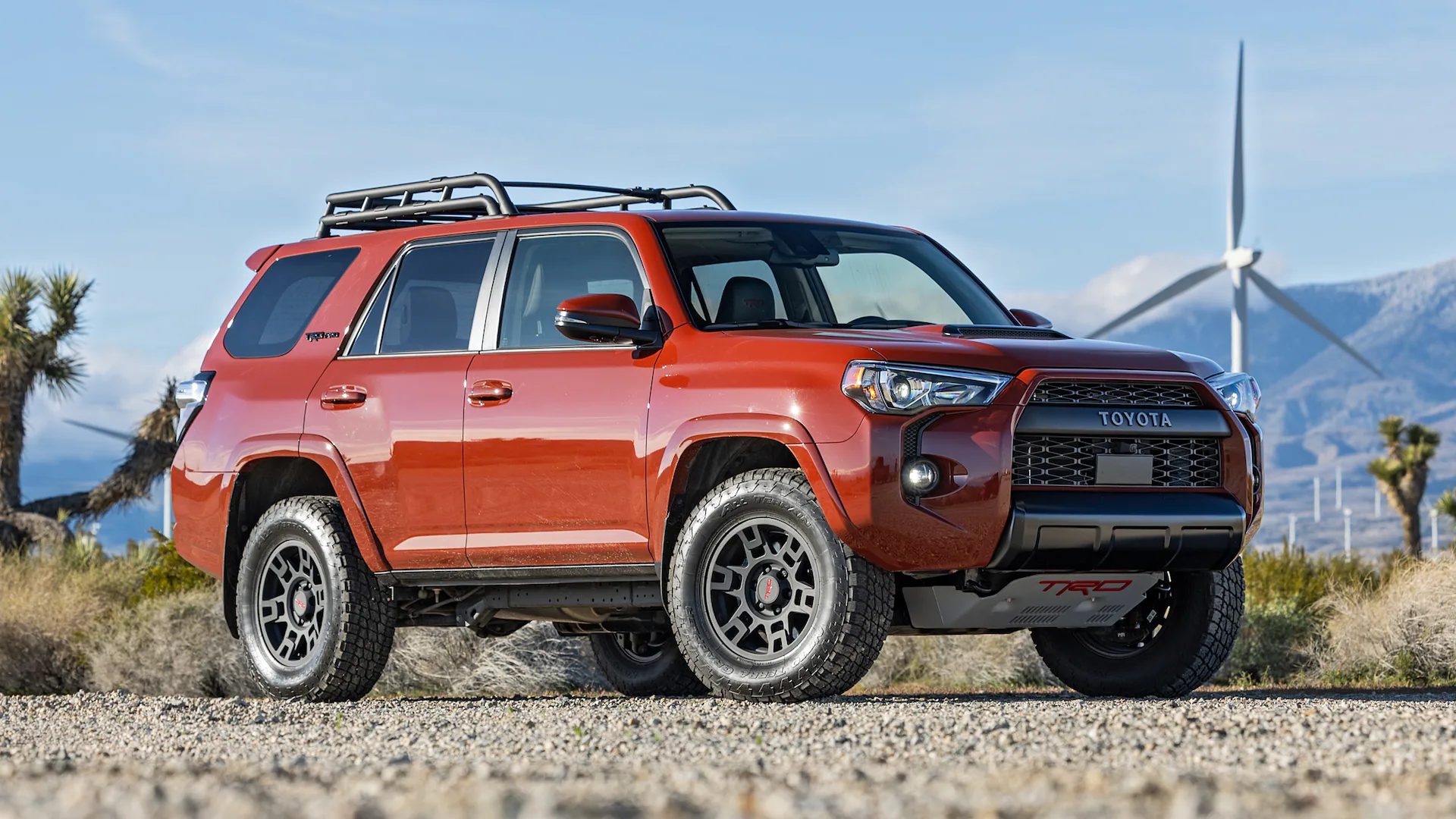
4. Toyota 4Runner (4th, 5th Generation)
The Toyota 4Runner is one of the few remaining midsize SUVs that sticks to the old-school off-road formula—and it shows in its long-standing reputation for durability.
Whether it’s the 4th generation (2003–2009) or the current 5th generation (2010–present), the 4Runner combines body-on-frame construction, a robust part-time 4WD system, and a high-clearance suspension to form one of the most dependable off-road machines in its class.
While not as plush or tech-laden as some of its competitors, the 4Runner excels where it counts: mechanical resilience. The 4.0L 1GR-FE V6 engine used across both generations is famous for its reliability, often hitting 300,000 miles or more with basic maintenance.
Its simplicity and accessibility under the hood make it a favorite among overlanders and backcountry explorers who want a rig that they can maintain themselves, even in remote areas.
One of the key strengths of the 4Runner is its bulletproof drivetrain. The available locking rear differential, along with features like A-TRAC (Active Traction Control) and Crawl Control (in certain trims), provide serious off-road traction and crawlability. The truck’s suspension geometry and wheel articulation are tuned for actual trail use, not just for show.
Unlike many modern SUVs that lean into crossover architecture, the 4Runner has stayed true to its roots, with a sturdy chassis, steel fuel tank, and real frame rails that can take abuse.
The optional KDSS (Kinetic Dynamic Suspension System) improves wheel articulation over uneven terrain while still maintaining stability at highway speeds—a rare balance that few competitors achieve. On the trail, the 4Runner shrugs off boulders, deep ruts, and steep inclines with the kind of composure that many more expensive SUVs can’t match.
More importantly, the 4Runner’s design is refreshingly analog. The traction control systems don’t override driver input unnecessarily, and the lack of excessive onboard tech means fewer things to break when you’re hundreds of miles from civilization.
This is the SUV that park rangers, wilderness guides, and serious adventurers trust—not because it’s flashy, but because it just works. In an era where SUVs are becoming softer and more tech-dependent, the 4Runner remains a rolling tribute to everything that makes old-school off-roading great: simplicity, strength, and the kind of reliability that builds legends.
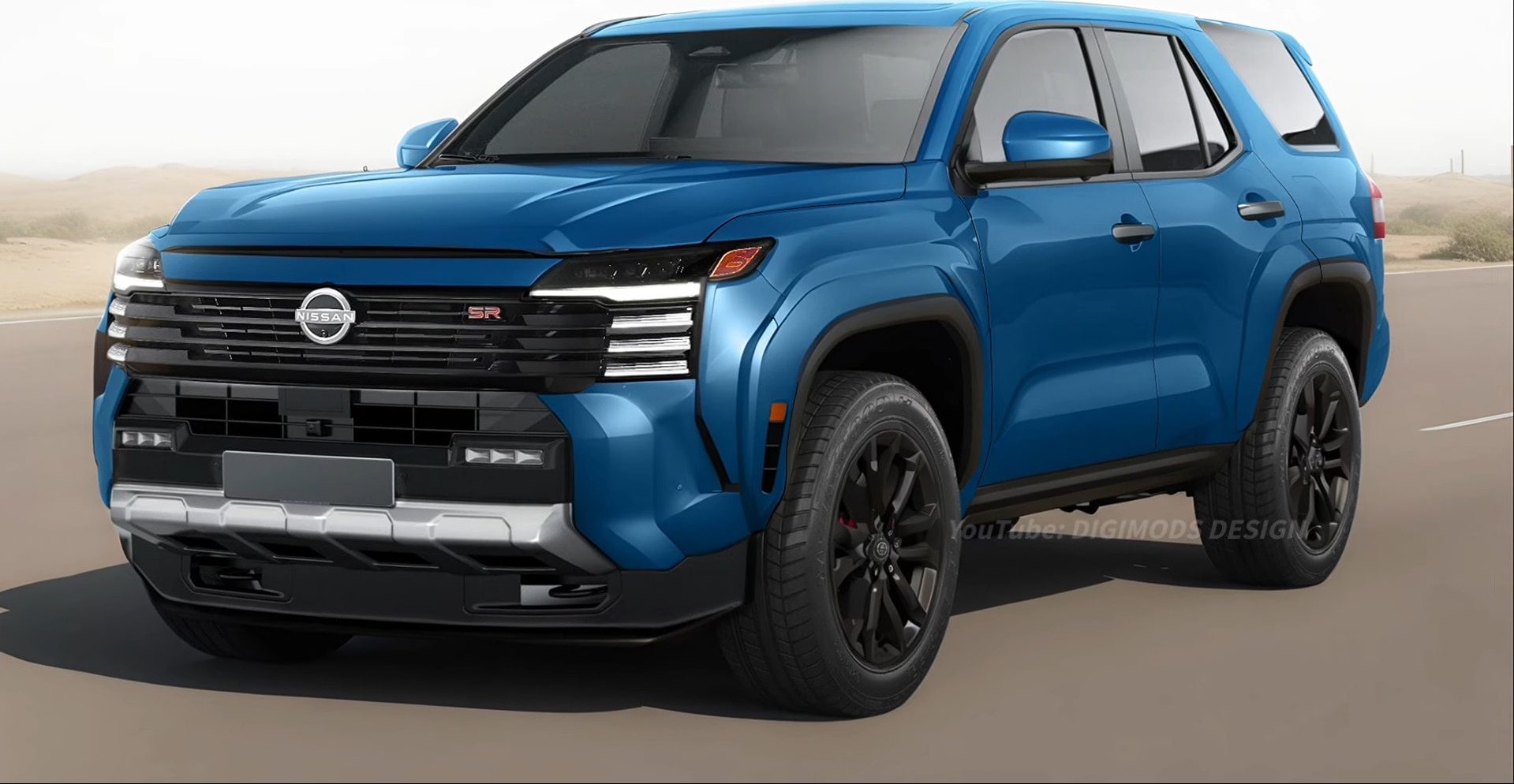
5. Nissan Xterra (2000–2015)
The Nissan Xterra is one of the most underrated and over-performing off-road SUVs ever made. Built on the same rugged F-Alpha platform as the Frontier and early Titans, the Xterra wasn’t designed for luxury—it was built for abuse. With its simple, no-frills approach to trail readiness, the Xterra became a cult favorite among those who cared more about capability than creature comforts.
The first generation (2000–2004) offered a tough 3.3L V6 and a functional 4WD system, but it was the second generation (2005–2015) that truly elevated the Xterra’s off-road game. The 4.0L VQ40DE V6 was both powerful and long-lasting, capable of serious rock crawling and high-speed dirt travel without protest.
It came with a real low-range transfer case, optional locking rear differential (in Pro-4X models), and one of the highest approach angles in its class, allowing it to scale obstacles that would stop most crossovers in their tracks.
What set the Xterra apart wasn’t just its mechanical toughness—it was the fact that Nissan engineered it to take hits and keep going. The Pro-4X trims came stock with skid plates, Bilstein shocks, and upgraded Dana axles, making it trail-ready out of the box.
Its relatively short wheelbase and boxy design made it extremely maneuverable on tight trails, and its high roofline allowed for excellent cargo storage, which became a major plus for overlanders and expedition-style travelers.
The interior was built to be washed out, not pampered, with rubberized flooring, simple controls, and no overly sensitive electronics that could short out in dusty or wet conditions. The suspension was rugged but tunable, and aftermarket support grew over time, offering options for lifts, bumpers, and armor that transformed the Xterra into a go-anywhere beast.
Though Nissan discontinued the Xterra in 2015, its reputation has only grown stronger in the years since. Used examples are still prized among off-roaders for their value, reliability, and toughness. Many have racked up hundreds of thousands of miles across deserts, forests, and mountain trails with minimal issues.
In short, the Xterra is a workhorse—a true off-road SUV that doesn’t get the spotlight it deserves but consistently outperforms flashier rivals when it counts. It may no longer be in production, but it absolutely earns its place on the list of SUVs that take a beating and just keep going.
5 Off-Road SUVs That Break Too Easily
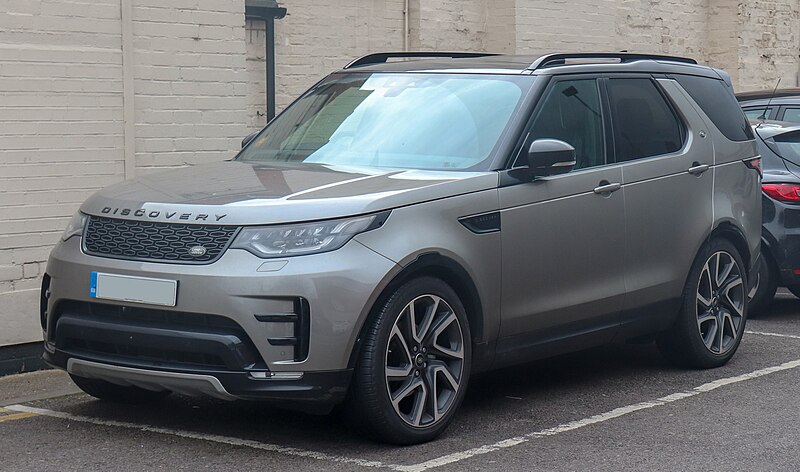
1. Land Rover Discovery 3 / LR3
The Land Rover Discovery 3, known as the LR3 in North America, is one of the most frustrating examples of an SUV that promised serious off-road performance but often ended up sidelined due to mechanical failures.
On paper, the LR3 was a technological marvel: fully independent air suspension, Terrain Response system, locking center differential, and impressive articulation made it seem like a dream for adventurers.
It could climb, crawl, and ford better than most, and its sophisticated electronics gave it an edge in tricky terrain. However, the reality was that those very systems became its Achilles’ heel. The air suspension, while offering excellent ride comfort and clearance, was notoriously unreliable. Owners frequently reported suspension faults that left the vehicle sagging, stuck in “access mode,” or completely immobile.
The compressors would fail, the air struts would leak, and the sensors would throw error codes at the worst possible time—often in the middle of a trail.
Mechanically, the LR3 also struggled. The 4.4L Jaguar-sourced V8 wasn’t particularly robust and was known to suffer from oil leaks, timing chain issues, and excessive heat soak, which could damage adjacent components in the engine bay. The cooling system was complex and failure-prone, often resulting in overheating or coolant leaks from plastic components.
The transmission, while smooth when functioning, was sealed for life, which meant few owners ever serviced it properly, leading to premature failure. Worse still, these problems were compounded by astronomical repair costs and limited DIY-friendly serviceability. Off-roading in a vehicle with this many delicate sensors and components simply became a gamble.
For every enthusiast who tried to build an LR3 into a serious trail rig, there were many more who abandoned the platform after thousands of dollars in repair bills and endless dashboard warning lights.
Despite its excellent off-road geometry and theoretical capability, the LR3 simply couldn’t hold up under real-world off-road stress. It’s a vehicle that tries to do too much with fragile components, proving that complexity is often the enemy of durability in the wild.
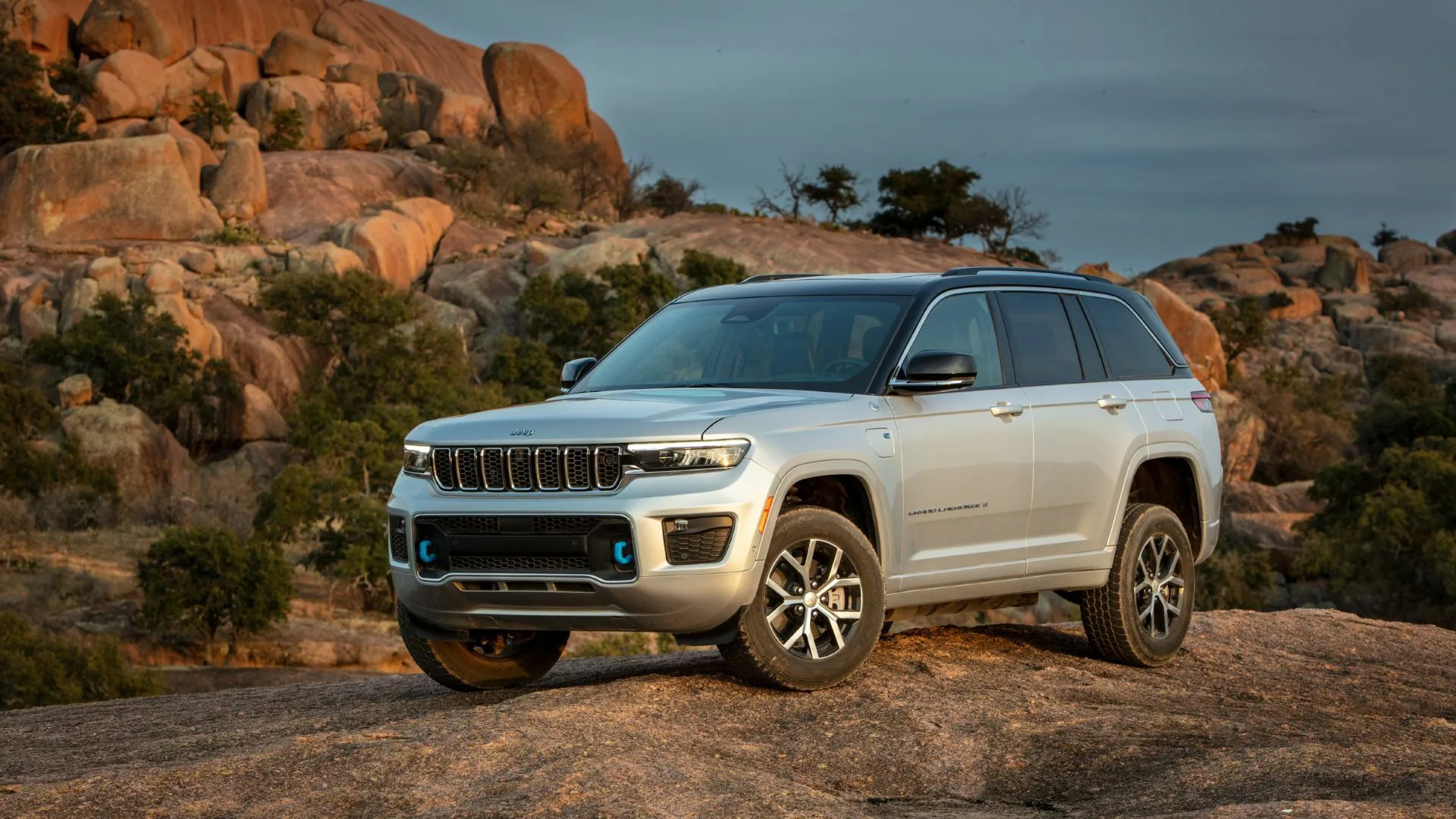
2. Jeep Grand Cherokee (WK2, 2011–2021)
The Jeep Grand Cherokee WK2 is a prime example of an SUV with off-road marketing and street-oriented priorities that clash under pressure. Built on a unibody platform derived from the Mercedes-Benz ML, the WK2 sacrificed the body-on-frame strength and mechanical simplicity of earlier Jeeps in favor of comfort, luxury, and highway manners.
While Jeep equips higher trims like the Trailhawk with Quadra-Lift air suspension, low-range gearing, and skid plates, the reality is that the Grand Cherokee quickly reveals its limitations in sustained off-road use. The air suspension is one of the biggest pain points.
Though it offers excellent articulation and adjustability on paper, in practice it’s prone to premature failure. Compressors burn out, airbags leak or collapse entirely, and electronic sensors go haywire—especially when exposed to mud, water, or cold temperatures.
Once the suspension system fails, the vehicle often gets stuck in limp mode, leaving drivers stranded with reduced ground clearance and limited mobility.
The WK2’s drivetrain reliability also falls short of Jeep’s rugged image. Many models came with the 3.6L Pentastar V6, which while generally decent, suffered from early issues with cylinder head failure and oil consumption. The more powerful HEMI V8 variants offered impressive torque, but with that came concerns about lifter failure, camshaft wear, and excessive heat under off-road loads.
Additionally, the electronics in the WK2—especially the early Uconnect systems, air ride controls, and terrain response software—were notoriously glitchy. When mud or moisture made its way into the wiring harness or sensor housings, all bets were off.
Owners often complained that their Grand Cherokees would enter limp mode, lose off-road features, or shut down power entirely after minor water crossings or bumpy trails.
And unlike the Wrangler or older XJ, the WK2 is not easy to repair in the field. It requires dealership-level diagnostics and tools, which defeats the purpose of remote off-roading.
While the Grand Cherokee WK2 might look the part and feel refined on pavement, its delicate systems and luxury-first design philosophy make it a poor long-term partner when the terrain turns unforgiving. In short, it’s more mall crawler than rock crawler.
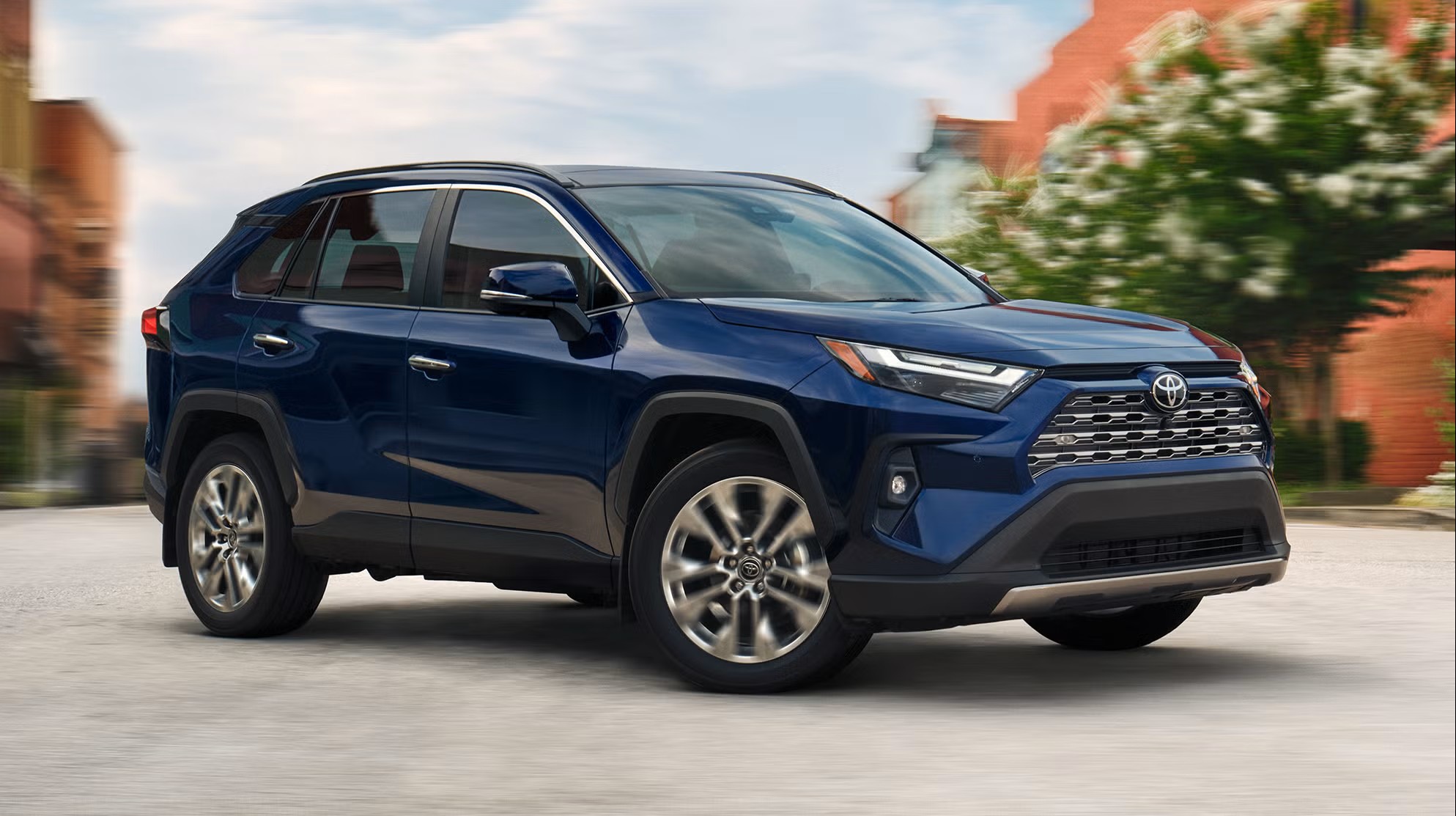
3. Toyota RAV4 (Adventure/TRD Off-Road Trims)
The Toyota RAV4, especially in its Adventure and TRD Off-Road trims, is a textbook example of clever marketing exceeding mechanical reality. On the surface, Toyota dressed the RAV4 with rugged styling, a slightly lifted suspension, and black plastic cladding to give the illusion of off-road readiness.
However, the truth is that the RAV4 remains a crossover at heart—built on the same unibody platform as the Camry—and its off-road capability is minimal at best. The all-wheel-drive system is reactive, not proactive, meaning power only goes to the rear wheels when the fronts have already lost traction.
This creates a noticeable delay that can cause problems on slippery or uneven terrain. Despite a few terrain drive modes and modest tweaks in the TRD trim, the RAV4 lacks a low-range transfer case, locking differentials, or meaningful chassis protection, making it ill-suited for anything beyond gravel roads or light trails.
Mechanically, the RAV4 isn’t terrible—it’s just not built for punishment. The suspension is soft, the control arms are lightweight, and the undercarriage is largely unprotected by anything more than flimsy plastic splash guards. Off-road, even minor obstacles can damage critical components like the exhaust system, oil pan, or CV boots.
The hybrid version complicates things further, as it lacks a mechanical link between the front and rear axles, relying instead on an electric motor to power the rear wheels. While that setup may help in snow-covered parking lots, it falls apart quickly under sustained torque or rough terrain.
Furthermore, the electronic traction systems can be overly aggressive, cutting throttle or braking wheels unpredictably, which makes climbing or descending off-road slopes frustrating and sometimes dangerous.
The RAV4 may be an excellent daily driver or a soft-roader for weekend camping trips, but it’s far from capable when the dirt gets deep or the terrain gets technical.
Buyers lured in by its aggressive looks and “off-road” marketing may find themselves stranded—or at least very disappointed—when the real challenges of the trail reveal its limitations.
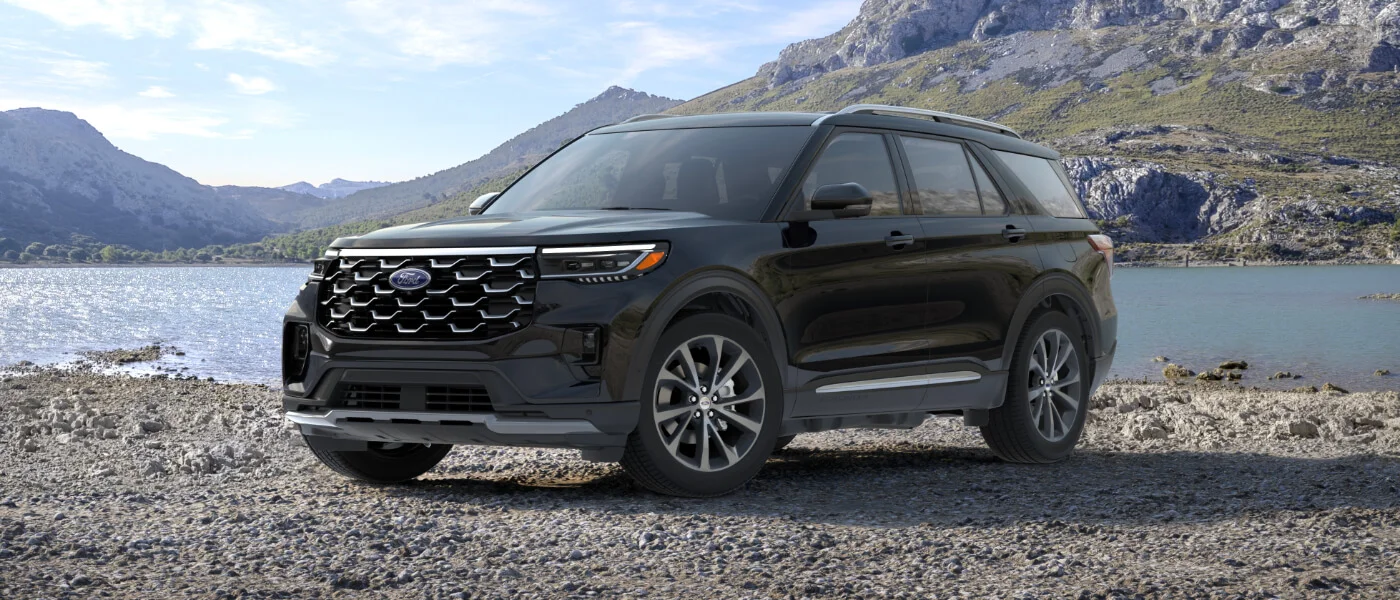
4. Ford Explorer (4th–6th Generation)
The Ford Explorer once had a reputation for toughness, especially in its early body-on-frame configurations from the 1990s. But beginning with the fourth generation (2006–2010), and accelerating with the shift to a unibody structure in the fifth and sixth generations, the Explorer has become more of a family hauler than a genuine off-road vehicle.
Despite marketing language that references adventure, capability, and ruggedness, the Explorer is largely built for paved roads. Its independent suspension, front-biased all-wheel-drive system, and car-like underpinnings severely limit its off-road performance. Even in the newer Timberline trim—Ford’s supposed off-road-focused variant—the Explorer falls short.
There’s no true low-range gearing, no locking differentials, and only modest increases in ride height and tire aggressiveness. Underneath, key mechanical components remain exposed and vulnerable, while the vehicle’s electronics often misinterpret off-road conditions, triggering traction control errors or cutting power at the worst moments.
The problems don’t end with capability—the Explorer also struggles with mechanical reliability, especially under stress. Turbocharged EcoBoost engines, while powerful on paper, are heat-sensitive and prone to long-term wear when pushed hard, particularly in dusty or high-load environments.
Transmission issues have plagued multiple generations, with early models suffering from hard shifts and failure under towing or hill climbing.
And because the AWD system is designed more for snowy roads than for rock crawling or mud bogs, it often overheats or malfunctions if driven aggressively in off-road conditions.
Add to that the Explorer’s heavy curb weight, poor approach and departure angles, and minimal aftermarket support for real off-road gear, and you have a vehicle that simply can’t live up to its adventurous image.
It may look the part, especially with some factory accessories and big tires, but the Explorer is far more mall-crawler than mountain-conqueror. It’s best kept on pavement and graded fire roads—anything more will reveal just how quickly this SUV falls apart under pressure.
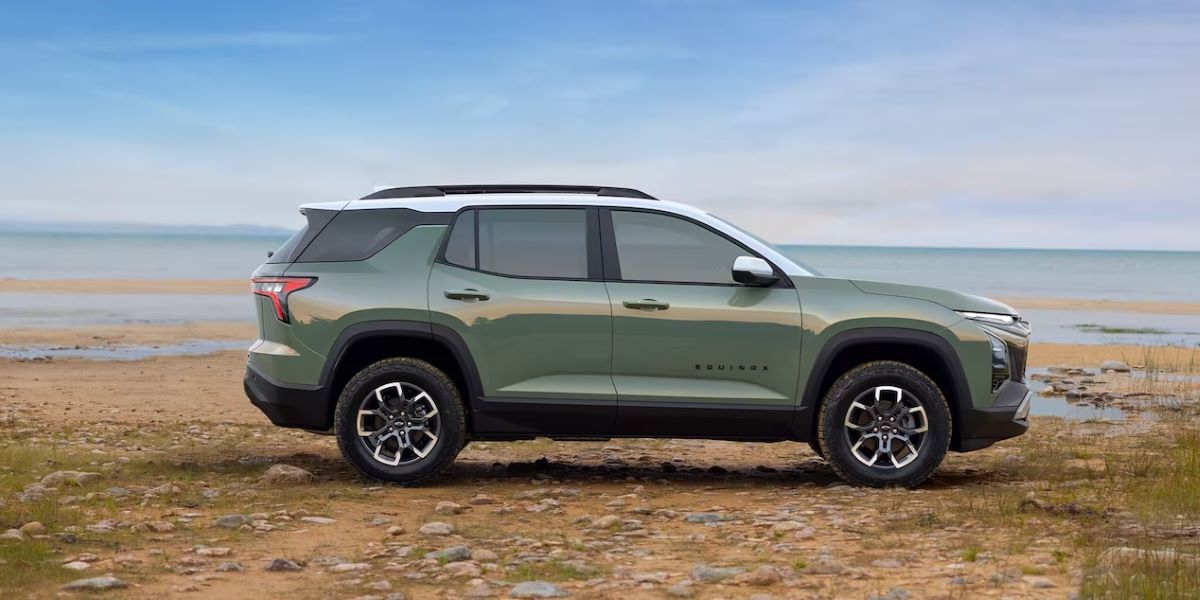
5. Chevrolet Equinox AWD
The Chevrolet Equinox AWD is perhaps one of the least suitable vehicles to wear the SUV label when it comes to real off-road driving. Like many modern crossovers, it’s built for comfort, efficiency, and light utility, not the rigors of the trail.
Despite having available all-wheel drive and a slightly raised ride height compared to its sedan counterparts, the Equinox lacks every essential ingredient for durability in rugged terrain.
There’s no true four-wheel-drive system, no low-range transfer case, no chassis protection, and minimal suspension articulation. The AWD system is basic and reactive, unable to provide consistent traction in sand, mud, or snow-covered inclines.
What’s worse, the Equinox’s undercarriage is highly vulnerable, with key components such as the oil pan, control arms, and fuel lines left exposed and unshielded.
A single stray rock or poorly judged rut can cause significant damage, potentially stranding the vehicle and racking up expensive repairs.
Reliability-wise, the Equinox has its own baggage. The 2.4L Ecotec engine used in many models has been notorious for timing chain issues, excessive oil consumption, and failure-prone PCV systems. These issues, while manageable for daily commuting, can be disastrous in off-road environments where help is far away.
Suspension components wear quickly when exposed to uneven terrain, and the vehicle’s soft springs and dampers are simply not up to the task of repetitive impacts or full-load articulation.
Beyond the drivetrain, the interior components and wiring also begin to rattle and degrade after minimal rough use, and the infotainment system has been known to freeze or glitch—sometimes triggered by nothing more than a jarring bump.
Combine all of this with minimal aftermarket support and you have a crossover that offers the look of an SUV without any of the functionality.
While it may be a fine family car for suburban errands and mild winter roads, the Equinox breaks far too easily to be trusted in real off-road conditions. It’s a reminder that not all “SUVs” are created for adventure—some are simply dressed for the role and crumble when asked to play it.
Also Read: 10 Cars That Keep Starting Even in Harsh Winters and Tackle Snow With Confidence
When it comes to off-road SUVs, the difference between marketing hype and real-world performance can be staggering. The vehicles that truly take a beating—like the Toyota Land Cruiser, Jeep Wrangler, Lexus GX, Toyota 4Runner, and Nissan Xterra—share one core principle: mechanical integrity over flash.
These rigs are built on proven platforms, using time-tested drivetrains, durable suspension setups, and body-on-frame construction that can handle the repeated abuse of trails, rocks, and long-haul overland travel.
They’re not always the most luxurious, and they may not have the latest infotainment systems or the smoothest ride on pavement—but when the terrain gets rough, they shine.
They’ve earned their reputations over decades of dependable service in some of the harshest environments on earth, and that kind of track record speaks louder than any badge or ad campaign ever could.
On the flip side, there are plenty of SUVs masquerading as off-roaders. Vehicles like the Land Rover LR3, Jeep Grand Cherokee WK2, Toyota RAV4 TRD Off-Road, Ford Explorer, and Chevrolet Equinox might look the part, but when tested beyond gravel roads and mall parking lots, they reveal just how fragile and overcomplicated they really are.
With systems that are too electronically dependent, AWD setups that lack true capability, and components that wear prematurely or break under trail conditions, these vehicles fail the most important off-road test: can they keep going when things get tough?
Many of these “soft-roaders” fall apart not due to lack of potential, but because they prioritize luxury, complexity, or cost-cutting over the fundamental need for resilience.
In the end, if you’re serious about off-road adventures—whether it’s weekend trail runs, cross-country overlanding, or remote backcountry exploration—choosing the right SUV is about more than just ground clearance and aggressive styling.
It’s about how well a vehicle endures stress, how easy it is to repair, and whether it will still be running strong after years of hard use.
The off-road world is not kind to weak machines, and only a few vehicles have proven they can survive the long haul. Make your pick wisely—because when you’re miles from help, your SUV is more than just transportation. It’s your lifeline.

